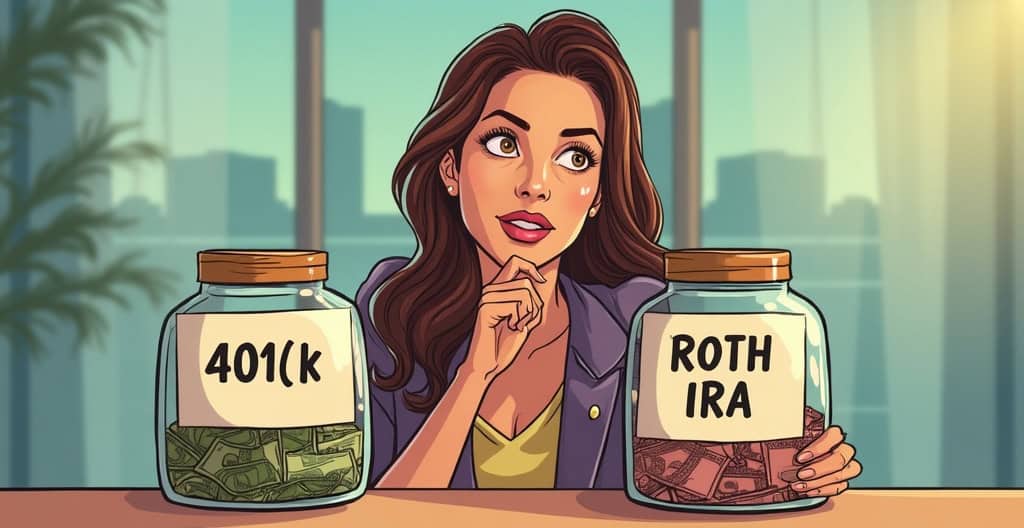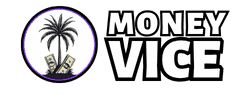
🔎 Disclosure: WE DON’T SELL ANY COURSES. Money Vice is reader-supported. When you buy through our links, we may earn a commission at no extra cost to you. The ideas presented on this site are opinions and are presented for entertainment purposes only. We’re not licensed financial advisors. The information presented should not be construed as financial or legal advice. Always do your own due diligence.
1. Think About How Soon You’ll Need the Money
You probably don’t want to wait until you’re old and gray to touch your money, right?
That’s where the timing game between a 401(k) and a Roth IRA comes in.
A 401(k) locks your money up until retirement (unless you love paying penalties 😬).
Meanwhile, a Roth IRA gives you way more flexibility. You can pull out your contributions anytime since you already paid taxes on that cash.
So if you think you’ll need some of that money for life stuff. Like buying a home or taking a long trip to Bali. A Roth IRA might feel more like your vibe.
👉 Here's How You'll Do It: Check your financial goals on a timeline and use a free calculator like NerdWallet’s retirement planner to see which account matches your plans.
📌 SAVE IT FOR LATER! 📌

2. Compare Contribution Limits and Rules
Here’s the deal: both accounts have limits, and those limits decide how much your money can grow.
In 2025, a 401(k) lets you contribute up to $23,000 (and more if you’re over 50).
A Roth IRA? You’re capped at $7,000, which feels like bringing a spoon to a food fight, IMO.
But hey, the Roth lets you pick your own investments, while your 401(k) usually comes with pre-set options from your employer.
So it’s a trade-off. More freedom or more funding.
👉 Here's How You'll Do It: Look up the latest IRS contribution limits online, then decide if you’d rather max out your 401(k) for bigger deposits or keep your Roth IRA flexible with smaller ones.
3. Choose Based on Your Current Income Level
If you’re earning big right now, you might want that sweet 401(k) tax break today.
Every dollar you put in reduces your taxable income, which means you keep more of your paycheck this year.
But if you’re still climbing the income ladder, a Roth IRA could be your best move. You’ll pay taxes now while your rate is low, then enjoy tax-free withdrawals later.
Basically, it’s “pay taxes now or pay them later,” and the right choice depends on which sounds less painful to your wallet.
Think of it as deciding between eating the veggies now or the broccoli casserole in 30 years.
👉 Here's How You'll Do It: Use SmartAsset’s free tax estimator to see your current bracket and decide if pre-tax or post-tax savings make more sense for your income level.
Bonus Tip: Review Your Plan Every Year as Income Changes
Life changes fast, and so does your money situation.
One year you’re hustling two jobs, and the next you’ve got a promotion, new goals, or even a kid on the way.
That’s why it’s smart to revisit your retirement plan every year. Your 401(k) and Roth IRA mix shouldn’t stay frozen while your life evolves.
When your income shifts, your tax bracket might too, and that can totally change which account gives you the best bang for your buck.
That’s where tools like Boldin come in handy. It helps you track your income, savings goals, and investments in one place, so you actually see how small changes add up.
👉 Here's How You'll Do It: Set a yearly reminder to log into your Boldin dashboard, review your contributions, and adjust your 401(k) or Roth IRA percentages based on your new income level and goals.
4. Consider Future Tax Rates Before Deciding
No one knows where tax rates will go. But let’s be honest, they rarely go down.
If you think taxes will be higher when you retire, a Roth IRA gives you the upper hand.
You pay taxes now and enjoy tax-free growth forever (and yes, that’s as good as it sounds).
If you expect to drop into a lower tax bracket later, a 401(k) might make more sense.
Either way, you’re betting on the future… and no one’s got a crystal ball (unless you count Excel sheets).
👉 Here's How You'll Do It: Compare your current tax rate to projected retirement rates using SmartAsset’s free tax estimator to see which account gives you the biggest long-term break.
5. Use Both Accounts for a Stronger Retirement Plan
Who says you have to choose one?
You can totally use both a 401(k) and a Roth IRA., and honestly, that’s where the magic happens.
Your 401(k) gives you that employer match (aka free money), while your Roth IRA adds tax-free withdrawals later.
It’s like having rice and beans on your financial plate. Better together, my friend.
The combo gives you flexibility, tax balance, and more peace of mind when life throws you a curveball.
👉 Here's How You'll Do It: Contribute enough to your 401(k) to get the full employer match, then set up automatic monthly deposits to a Roth IRA using an app like Fidelity or Betterment.
📌 SAVE IT FOR LATER! 📌

And that’s it!
Never forget it…
🍔 A Bigger Bank Account Is Waiting For You!
😉 Dale!




